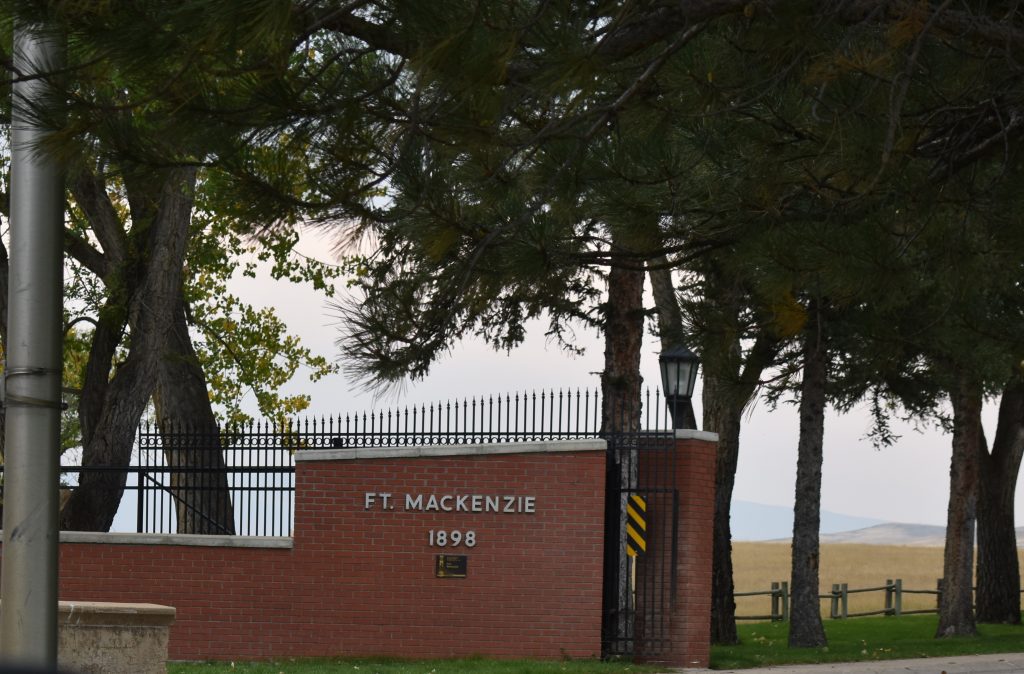News
Sheridan’s VA Hospital Turns 100 This Year

This year, the Sheridan Veteran’s Hospital turns 100 years old. The community is urged to get involved with the celebration.
Cherish Thomson Public Affairs Specialist, said, “We are going to be trying to gather stories from the community from families that used to live on station or were once employed at the VA etc. as part of our 100 year history as a hospital. We will be trying to get the community involved to help us in our endeavors to dig up some stories about the VA. For more information contact Cherish.Thomson@va.gov
Fort Mackenzie, built in 1899, started life as an actual fort, and was at first a few log buildings.

In 1903, the buildings were upgraded and, according to a Sheridan Post article in September of that year: Fort Mackenzie is destined to become one of the most important and beautiful posts in the United States. The buildings are faced with pressed brick, and the finishing and interior furnishings are the best that are made.
Once the Plains Indian Wars were over, and frontier forts were decommissioned by the government, there was a question about what would happen to the Sheridan fort. There was talk about making it into a school.
In The Worland Grit, May 23, 1918: Historic Fort Is to be Abandoned – That Fort Mackenzie is to be abandoned is a foregone conclusion. As a matter of fact, as a post it is abandoned, although no formal order has to that effect yet been issued. Six soldiers of the quartermaster’s department under command of Lieutenant Herman Hurring are the sole representatives of the military fort, and orders transferring these men may be expected at any time… “That Fort Mackenzie is to be abandoned as a military post, there seems to be no reason to doubt,” said a gentleman who has kept in close touch with the situation and who for months has been working hard to induce the war department to make some use of the big establishment…. “Fort Mackenzie with its 5,000, acres of land would make an ideal location for a military school. Its buildings are of pressed brick and substantially constructed, and with little expense could be made to admirably serve the purpose of an academy. “I am informed that the government is looking with favor upon the establishment of military schools at this time, and if proper representations were made by those in authority. It is very probable that the fort could be secured upon most favorable conditions. Naturally, nothing can be done until formal orders come abandoning the fort as a military post, but in my judgment this order may be expected at no distant day. When it comes, we should be ready to move, for if the magnificent buildings are to be utilized it should be done before any of them are dismantled, which is sure to be done if the fort is permanently abandoned.”
However, the school idea didn’t take off. But a veteran’s hospital idea did. In the Northern Wyoming Herald, Cody, on May 24, 1922 Senator Mondell Gets$75,000 Improvement Ft. Mackenzie. Congressman Frank W. Mondell has been notified that expenditure totaling 70,000 from the (75,000 expected for the Improvement of Fort Mackenzie to fit it up for a hospital for disabled soldiers is available.
In an interview with Thomas Hatch, Sheridan VA Engineer Tech and historian, he had this to say about the new Veteran’s Hospital. “In 1921, one senator did a fact finding mission to find out where WWI soldiers could go to recuperate. The Fort Mackenzie property was turned over to the Department of Veteran’s Affairs to build a hospital.
“From that moment they let out contracts to get the buildings ready for occupation. June 22, 1922, the 125-bed hospital opened to public. General Anderson supervised the renovations, and Dr. Richard S. Blackmore was the first administrator. In July the first patients arrived.”

This from the Northern Wyoming Herald, July 12, 1922: Soldier Patients Arrive at Fort Mackenzie The first installment of 23 patients for the Public Health Service hospital at Fort Mackenzie at Sheridan arrived Friday bringing to a reality the wishes of the Sheridan county citizens in making available the fort for recuperation purposes. The patients came from Pueblo, Colorado and are all mental patients. Congressman Mondell is credited for turning an institution idle for many years into one of usefulness to society.
Thomas Hatch continued about the VA’s early years after WWI. “When the government inspectors came out to examine the site, they found views of the mountains and the rolling hills and animals, fresh air, and a lot of sunlight.

“At one time soldiers from Philippines returned with a disease that the doctors felt could be cured by sunlight. The hospital brought beds outside for patients and set up some of the buildings with glass walls to let in plenty of sunlight.”
Also, at one time the treatment for mental health patients consisted of, in large part, keeping them busy.
Hatch said that there are now programs for treatment of mental health issues, and that the Sheridan VA has been on fore-front of many of the these treatments.
The VA Complex was added to the National Register of Historic Places in June of 1981. The register information states that the fort’s red-brick colonial style buildings form an impressive complex. It is only surpassed by F. E. Warren Air Force Base in Cheyenne and Fort Yellowstone at Mammoth Hot Springs as a homogeneous collection of historic federal buildings in Wyoming.

